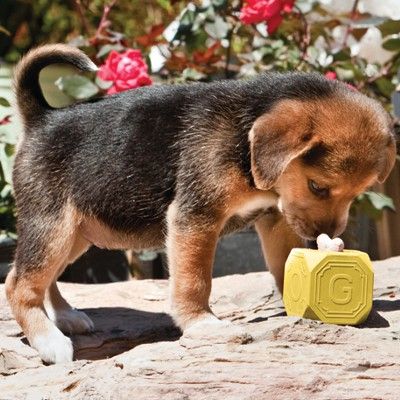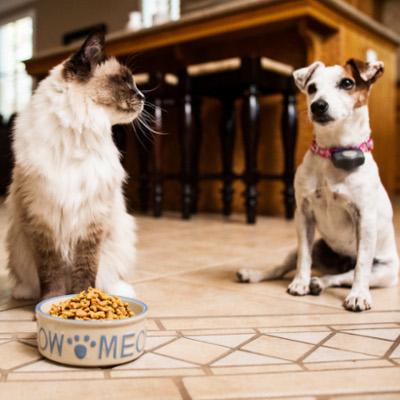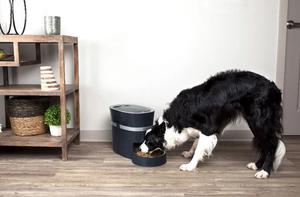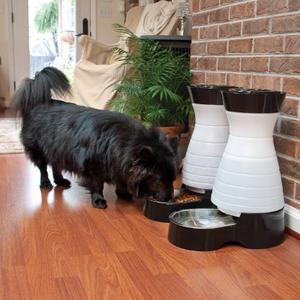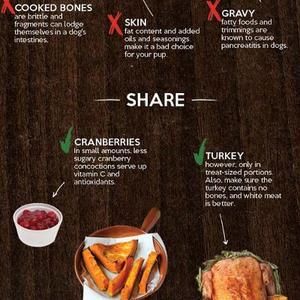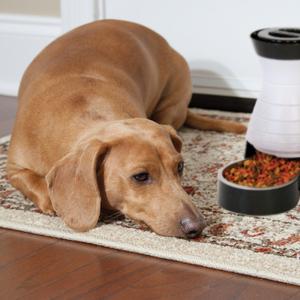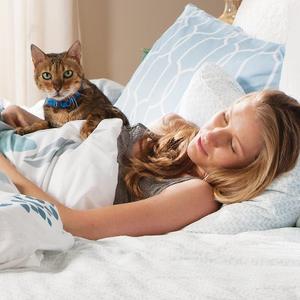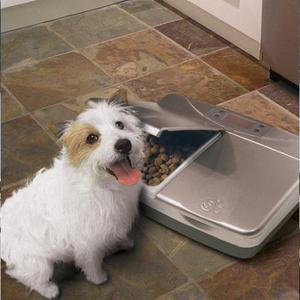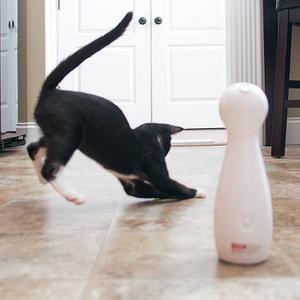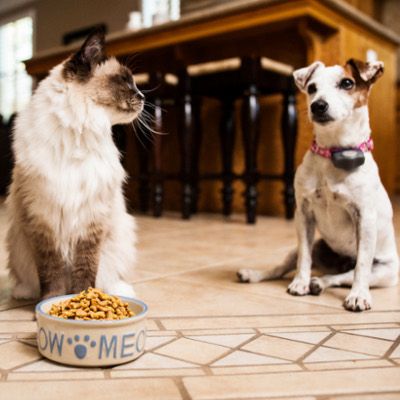 When dogs and cats live together, they often snack from each other's food bowls. At my house, Magical-Dawg prefers cat food and treats to his own, and Karma-Kat often checks out the dog's bowl as well. A taste now and then probably won't upset your pets' nutrition, but it can hiss off the cat or put the dog's tail in a twist. While we love them both, their nutritional needs are not the same, and eating each other's food can make them sick or worse.
When dogs and cats live together, they often snack from each other's food bowls. At my house, Magical-Dawg prefers cat food and treats to his own, and Karma-Kat often checks out the dog's bowl as well. A taste now and then probably won't upset your pets' nutrition, but it can hiss off the cat or put the dog's tail in a twist. While we love them both, their nutritional needs are not the same, and eating each other's food can make them sick or worse.
Why Dogs & Cats Shouldn't Share Food
A cat requires specific nutrients, including taurine, that's lacking in dog food in proper amounts. Insufficient dietary taurine could result in kitty heart or eye problems. On the other paw, cat food has more protein and is more calorie-dense than typical dog food. Eating too much cat food could pack on pounds and lead to a pudgy pooch.
Because cats and dogs have different eating styles, they need to eat on different schedules, too. Cats tend to nibble a mouthful at a time, and come and go from the bowl throughout the day. Dogs evolved as gorgers and usually gulp everything at once. When you leave food out for kitty all day munching, your dog sees the opportunity to empty the bowl.
How to Keep Dog & Cat Food Separate
Supervise feedings with cats and dogs on opposite sides of the kitchen. Usually the dog finishes first, and he can go out into the fenced yard to "do his duty" while the cat has more time to finish her meal. 10-20 minutes generally allows enough time for each meal to be finished.

Put cat bowls on elevated spots like counters, cat trees, or the washing machine so they're out of reach of nosy dogs. When the cat's food bowl is next to a preferred sleeping and lookout spot, your cat also will be less likely to graze from the floor level dog dish.
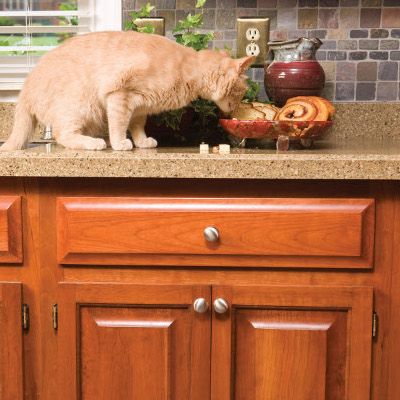
If you don't have enough second story locations or your jumping dog can reach counters, feed pets in different rooms. Assigning each pet a "food place" also identifies the area as owned territory by that particular pet. Placing all the feeding stations in the same spot in your kitchen increases the chance dogs and cats will argue over who owns what.

Perhaps you don't have secure doorways or enough rooms to assign each pet his or her own room. Use a baby gate or pet barrier to segregate hallways or stairways to create separate feeding areas. Baby gates can be stacked so that big dogs can't hop over. They can be situated with a cat-size opening at the bottom so that only the cat can access the food on the other side.
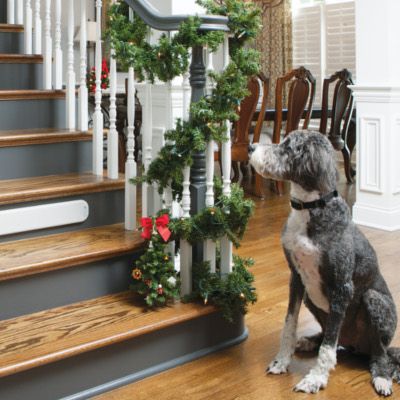
Meal feeding in 2 or 3 scheduled times lets the pets anticipate the routine. Meal feeding is healthier for pets and lets you monitor who eats what. You can pick up any leftovers and lock them safely away in a cabinet for the pet's next meal.
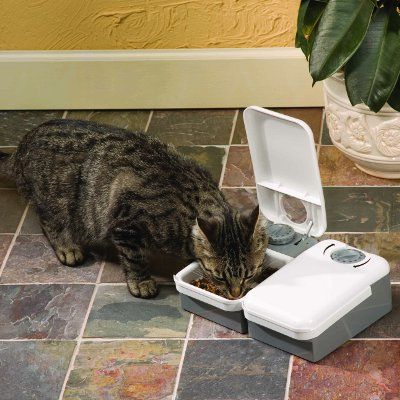
When feeding at the same time won't work, try to stagger feeding times. Most pets eat all they want within 10-20 minutes. You can schedule mealtimes 10 minutes apart in different locations or the same spot, moving pets in and out as needed. That can help you more easily supervise each meal and keep cats and dogs from snitching food from each other's bowls.
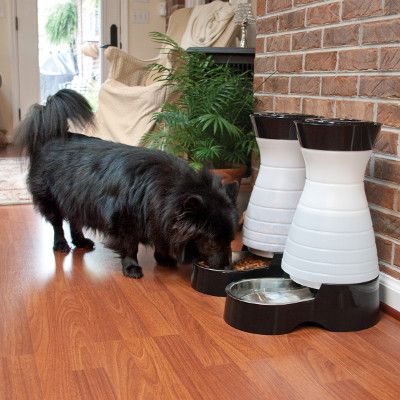
If your cat and dog vary greatly in size, create a 'boxed lunch' to give the smallest of the pair a private dining area. Cut a tiny opening in a clear plastic storage container that's only big enough for the smaller pet to get through. That way the pets can see through the container so they aren't ambushed when they enter or exit, and the bigger animal can't get to the food. Place the small pet's food bowl inside the box to nibble at his leisure.

Use puzzle toys to feed your pets. Most cats won't bother with the dog toys, so your dog's food may be considered off limits while the dog gets the added benefit of playing with a toy and getting "paid" with food. Place dry food inside a puzzle toy. You can find them at most pet stores or make one yourself. Place dry food inside a clear water bottle with the cap off, for example. -There also are commercial cat puzzle toys and timed containers that keep canned cat food fresh yet prevent dogs from accessing. For a homemade cat puzzle toy, get a clear plastic sealable box and cut paw-size holes in the lid. Place dry cat food inside for the cat to see and "fish" the food out.
